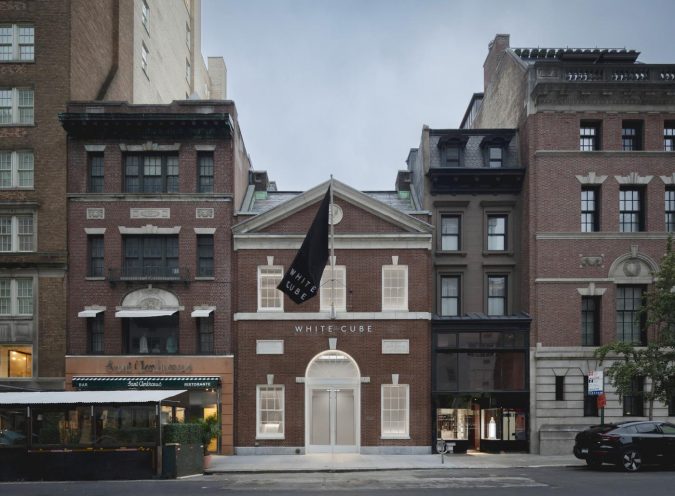White Cube New York.
The latest addition to Hot Topics in the Art World, Henry Little’s Commercial Galleries is taut, punchy, and full of insider knowledge. Each chapter could have its own review and analysis, raising wide ranging questions on the way the current gallery eco-system emerged, and how it can continue.
For the ArtTactic audience the most striking feature of Commercial Galleries is one of Little’s central themes –a lack of hard data. Almost everything is hearsay, estimated, best guesses. Little frequently returns to this distinction between auction houses and galleries – auction houses are based on open data, a willing buyer and a willing seller making a transaction. Galleries, on the other hand, though they are (rarefied and highly specialist) shops, are shrouded in mystery and opacity. Even in the midst of the digital revolution in the art market, there is rarely openly available pricing; simply having the money and wanting to buy a piece will not even admit you to the waiting list to be told the pricing, and there is a real sense of gatekeeping ownership and ability to build a collection. While the narrow range of artists reaching auction at the top houses obscures data on the art market, so too does this intentional withholding of financial information from galleries.
This bolsters the second distinction Little highlights between galleries on the one hand, and auction houses and the luxury industry on the other – barriers to entry. While access to the funds to participate in any of these commercial arenas is an obvious barrier, if we assume that potential buyers do have this access, the gallery eco-system is not necessarily open to them. Little describes how known collectors get better prices – thus allowing them to solidify their reputation, and preventing new comers from doing so. While the move toward Online Viewing Rooms, pioneered in large part by David Zwirner, appears to rectify this, in fact galleries largely use this tool to gather data on their clients, what’s hot, and who is selling – pressing ‘enquire now’ in an OVR simply enters you into the tangled web of galleries deciding who is allowed to be told the price of the work, let alone who is allowed to actually purchase it.
It’s a shame that an overview so focused on how the business commercial galleries work, and the barriers to entry to the eco-system for buyers, did not speak at all about those who staff these galleries outside of their big-name dealer owners. Living in commutable distance to any of these galleries is an expensive endeavour, especially compared to the actual pay those who do the work of the galleries will earn – before even considering the other barriers to entry prospective arts professionals face.
Commercial Galleries is illuminating and provocative, even if it can only shine a light on the opaque nature of the galley eco system – an excellent addition to an excellent series.

